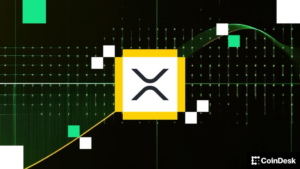The Federal Reserve’s Proposal: A New Era for Stablecoin and Payments Innovation
On October 21, 2025, Federal Reserve Governor Christopher Waller unveiled a groundbreaking proposal during the inaugural Payments Innovation Conference. This initiative aims to introduce a new type of payment account specifically designed for stablecoin issuers and cryptocurrency firms, providing them with direct access to the Federal Reserve’s payment infrastructure. This marks a significant shift in the Fed’s previously cautious approach toward digital assets, acknowledging the growing role of cryptocurrencies in the financial landscape. The proposed account, described as a “skinny” master account, offers basic connectivity to Fedwire and ACH systems while omitting features like interest payments, overdrafts, and emergency lending, essentially creating a payments-only conduit that could reshape dollar flow settlements.
The proposed payment account aligns with the concept of narrow banking, which separates payment facilitation from credit creation. Currently, stablecoin issuers function as de facto narrow banks, as they hold reserves against their tokens and facilitate money transfers without engaging in lending. However, they lack direct access to the Fed, necessitating partnerships with commercial banks for token redemption. Waller’s proposal would enable qualifying firms to hold their reserves directly at the Fed, allowing them to back their tokens with central bank money. This not only eliminates operational bottlenecks but also reduces the risks associated with bank runs, particularly during periods of financial stress.
One of the most significant advantages of Waller’s proposal is the operational efficiency it promises to bring to redemption flows. If issuers can post and receive payments directly through Fed’s payment rails, it could lead to a dramatic reduction in latency and improved processing speed during peak redemption periods. Currently, redemption requires routing through partner banks, introducing friction that can delay transactions. Direct Fed access means that issuance and redemption can occur in near real-time, enhancing liquidity and reducing the risk of delays or freezes associated with commercial bank intermediaries. However, concerns remain regarding balance caps associated with these accounts, which may limit larger issuers like Tether, who currently hold reserves in the tens of billions.
Waller’s proposal is also likely to facilitate faster decision-making for firms with pending applications for full master accounts, such as Custodia Bank and Ripple. Many advocates argue that crypto firms meeting banking-grade Anti-Money Laundering (AML) and Know Your Customer (KYC) standards deserve similar access to banking infrastructure as traditional financial institutions. Direct access to the Fed would allow firms like Ripple to settle dollar transactions in cross-border exchanges without relying on conventional banking channels. However, voices of skepticism, such as that of Arthur Hayes, co-founder of BitMEX, raise concerns about the potential disintermediation of commercial banks. The worry is that if larger issuers gain direct access to Fed rails, the role of commercial banks could diminish, threatening their deposit bases and overall stability in the financial ecosystem.
Waller has instructed the Fed staff to gather stakeholder feedback on the proposal, though no specific timeline has been established. The introduction of the GENIUS Act in July 2025, which outlined federal stablecoin requirements, did not provide direct access to Fed payment rails. Waller’s proposal fills this crucial gap and is seen as a vital step towards integrating cryptocurrencies into the federally supervised financial system. The implications of allowing major issuers direct access to the Fed could enhance liquidity and improve settlement quality across the board, creating a more stable environment for digital assets.
Importantly, Waller’s initiative would formalize the entry of cryptocurrency into a framework governed by the Federal Reserve, potentially altering the entire landscape for digital asset transactions. As compliant firms gain Federal-backed reserves, they would be insulated from risks associated with banking intermediaries, providing a system for rapid and secure processing of transactions. Furthermore, the proposal serves as a counterbalance to regulatory arbitrage; offshore issuers that do not comply with the GENIUS Act standards may lose competitive ground to U.S.-regulated firms offering safer, Fed-backed tokens.
In summary, the Federal Reserve’s proposal for a new payment account heralds a significant transformation for stablecoin issuers and cryptocurrency firms, establishing a formally integrated relationship with the central bank’s payment systems. By fostering direct access under carefully defined parameters—such as balance caps and restrictions on credit risk—this initiative aims to revitalize notions of narrow banking while safeguarding the interests of depositors and maintaining financial stability. As digital asset infrastructure increasingly solidifies its foothold in the mainstream finance sector, the Fed’s policy shift recognizes the critical role of cryptocurrencies in shaping the future of payments.

















